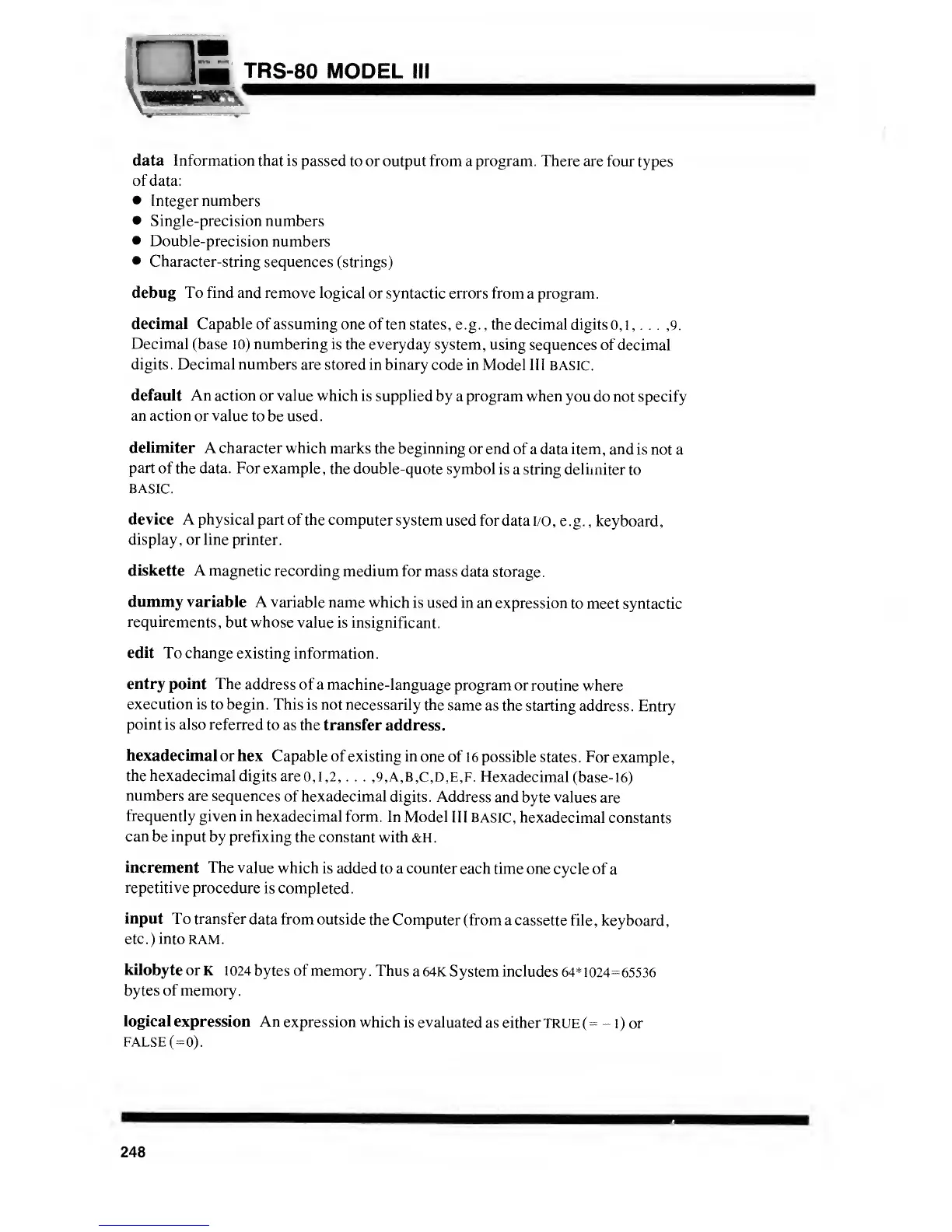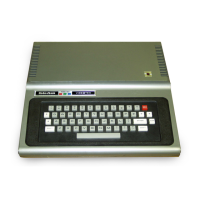[
Jai
TRS-80
MODEL III
<*
data Information that is
passed to or output from a program. There are
four
types
of data:
•
Integer numbers
•
Single-precision numbers
•
Double-precision
numbers
•
Character-string sequences (strings)
debug To find and remove logical
or syntactic errors from
a program.
decimal Capable
of assuming one of ten
states, e.g., the decimal digits
0,1,
...
,9.
Decimal
(base
10)
numbering is the
everyday system, using
sequences of decimal
digits. Decimal numbers are stored
in binary code in
Model III BASIC.
default An action or
value which is supplied
by a program when
you do not specify
an action or value
to
be
used.
delimiter
A character which
marks the beginning
or end
of a data item, and
is not a
part
of the data. For example,
the double-quote
symbol
is a string delimiter
to
BASIC.
device A physical
part of the computer
system
used for data I/O
, e .
g
.
, keyboard
,
display, or line
printer.
diskette A
magnetic recording
medium for mass
data
storage.
dummy variable A
variable name which
is used in an
expression
to meet syntactic
requirements,
but whose
value is insignificant.
edit
To change
existing information.
entry point The
address of a
machine-language
program or
routine where
execution is to
begin. This is not
necessarily the
same as the
starting address.
Entry
point is also
referred to as the
transfer address.
hexadecimal
or hex
Capable of existing in
one of
1 6 possible states . For
example
,
the hexadecimal
digits are
0,1,
2,
.
. .
,
9,
A, B,C,D,E,F. Hexadecimal
(base-
16)
numbers
are sequences
of hexadecimal
digits . Address
and
byte
values
are
frequently
given in
hexadecimal form.
In Model
III BASIC, hexadecimal
constants
can
be input
by
prefixing
the
constant with
&H.
increment The
value which
is added to a counter
each time one
cycle of
a
repetitive
procedure is
completed.
input
To transfer
data from outside
the Computer
(from a cassette
file, keyboard,
etc.) into
RAM.
kilobyte or
K 1024
bytes
of memory
.
Thus
a 64K System includes
64*
1024=65536
bytes of memory.
logical
expression An
expression
which is evaluated
as either
TRUE
(=
-
1
) or
FALSE
(=0).
248

